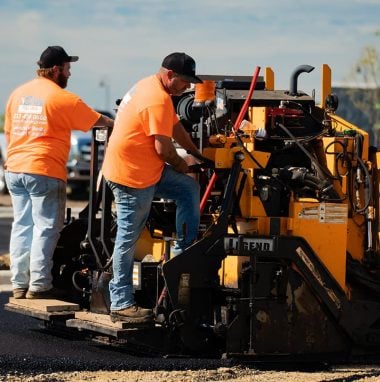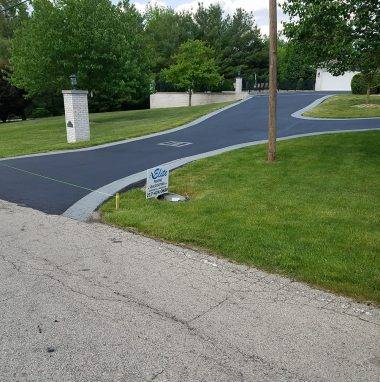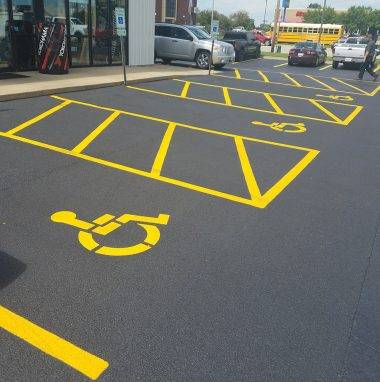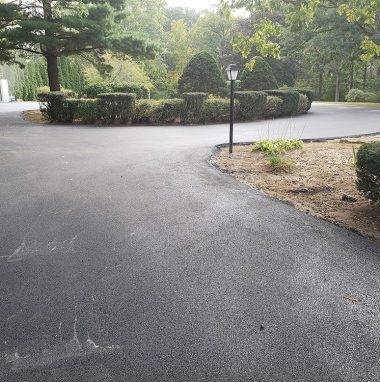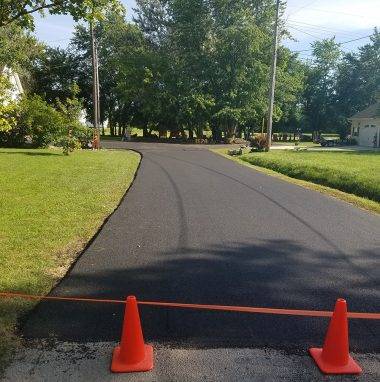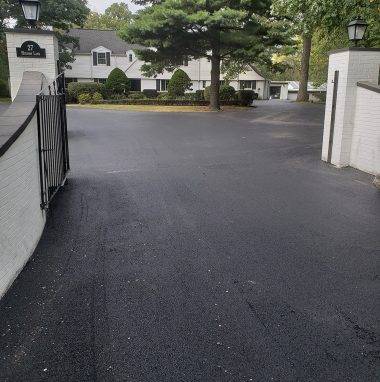Asphalt Repair Monticello, IL
Cracks on Rarely-Used Areas of Your Asphalt: What’s Happening?
Every year, you perform several types of asphalt repair techniques to make your pavement stronger and more resistant to damage. You focus heavily on spots where the most vehicles drive or park and try to keep your driveway or parking lot strong and sturdy. However, you’re noticing some very strange cracks appearing on areas of your pavement that you rarely use.
This situation is very frustrating and can complicate your asphalt repair in a variety of ways. Thankfully, this damage doesn’t occur for no reason, but instead has a variety of influences that trigger its development. Fully understanding why cracks pop up on spots of your driveway that you rarely use can help you better understand what you can do to prevent this issue from becoming more serious.
Why Cracks Appear in Your Pavement
The first thing to understand about pavement cracks is why they occur in the first place. Typically, cracks appear for a broad variety of reasons, each of which affects your pavement in different ways. For example, longitudinal cracks appear along weak joints in your sidewalk and can quickly spread far along your pavement. This issue is one that takes a lot of time and money to repair correctly.
Different types of cracks, such as alligator cracking, typically occur because of a lack of support in the pavement. For example, potholes and other types of holes occur when the subgrade or subbase of the asphalt is too weak to support the vehicles driving upon it. As a result, the pavement sinks, wears away, and leaves a problematic hole that may trigger a variety of issues with cars, including the risk of blown tires or damaged shocks and brakes.
Most cracks will appear in areas of your pavement where people most often drive. For example, areas near the front of a mall entrance often experience the most traffic and get the most damaged. However, just about any area of a parking lot or driveway can experience damage. Even out-of-the-way regions on the fringe of your parking lot, spots that are rarely used, may end up suffering from serious cracks.
Types of Cracks to Expect
Although many types of cracks can occur in rarely-used areas of your pavement, two types occur most commonly: block cracks and edge cracks. These issues are most common in these areas because they often develop slowly and get ignored by pavement owners who focus their asphalt repair more heavily on more heavily-used regions in their driveway or parking lot. This mistake is common and often hard to avoid.
Block cracking is a very frustrating problem that can occur on various types of pavement. Typically, this type of pavement occurs seemingly at random and is the most common type you’re going to see in rarely-used areas of your pavement. Rectangular cracks will rapidly spread across the surface of your driveway and lead to large patches that can become more expansive.
Most cracks of this type occur when your asphalt shrinks during various types of weather cycles. For example, freezing temperatures will contract the pavement and cause it to become brittle in multiple spots. As a result, these large cracks typically occur and can affect a large portion of your driveway or parking lot. They need to be fixed right away to avoid any severe complications or issues.
Edge cracking is precisely what its name implies – breaks on the surface of your pavement that typically occur within one to two feet of the edge of a slab. These cracks are generally longitudinal, which means they occur along the length of the pavement. Unfortunately, these cracks can very quickly spread through the surface of your pavement and trigger a multitude of issues that are hard to correct.
Edge cracks typically occur when there is a lack of support along the edge of the pavement. Unfortunately, this problem often occurs early in the life of a pavement slab because the installation experts didn’t do a good enough job adding support in those areas. And since these areas are very rarely driven upon, the pavement owner may not pay enough attention to them and let the damage spread even further.
What to Do About These Cracks
If you see these cracks appear on your pavement and you’re really sick of it, there are a few steps you can take to ensure that they don’t become a problem. First of all, you can hire expert asphalt repair professionals to come to your facility and inspect the asphalt. These professionals will take the time to check out your slab, including the subgrade and subbase, and will work to spot any issues.
For example, they can find any weak subgrade materials and improve their strength and stability to keep issues from developing. Professionals can also add a sealcoat to your driveway or parking lot to keep it stronger and more resistant to damage. A sealcoat will prevent weather-related issues – particularly temperature problems – from causing cracks on areas of your driveway that you rarely use.
Beyond these steps, you can also try to take better care of these rarely-used areas to keep them secure. For example, you should make sure that you pay special attention to the edges of your pavement, including sealing it with high-quality sealers during harsh weather conditions. Also, don’t forget to adjust weight distribution around these areas to keep them from unexpectedly cracking.
Getting Help for These Issues
When cracks seem to appear randomly on your pavement without any real reason, confusion and agitation are understandable reactions. You’ve tried to take care of your pavement for years and did everything that your asphalt repair specialists said that you should do. However, these cracks appear anyway, and you aren’t sure what else you can do to prevent them.
The best thing you can do in this scenario is to contact us at Elite Paving & Sealcoating to get the help you need for this frustrating experience.Serving the Monticello, IL and Central Illinois area, our asphalt repair specialists understand these concerns and will work hard to ensure that they are fixed as quickly as possible. Just as importantly, we can help you better understand your maintenance options and how to implement them properly.


